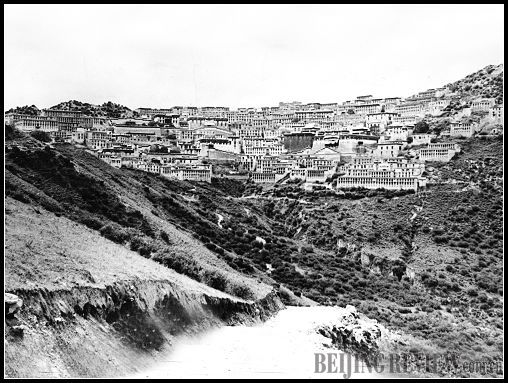|

The Gandain Monastery, one of the four major monasteries of the Gelug Sect in Lhasa, stands on Wangbur Mountain in Dagze County, some 60 km from downtown Lhasa. In 1409, Zongkapa built the ancestral monastery of the Gelug Sect with the financial aid of the royal family of Nedong. Taking Gandain Monastery as the base, the Gelug Sect was formally established. The monks of the sect wore yellow hats, so the sect was known as the yellow sect. The first Panchen Erdeni Kezhugyi was the first disciple of Zongkapa and the first Dalai Lama Gendun Zhuba was the youngest disciple of Zongkapa. As the major educational institute in the history of Tibet, the monastery contributed to medicine, astronomy, calendar, philosophy and literature and the artistic fields of music, dance, drama and painting of the Tibetan ethnic group, promoting the development of Tibetan traditional culture and prosperity of Tibetan Buddhism. In the past, the monastery boasted 31 halls and over 1,000 rooms for the residence of monks. The rated number of monks in the monastery in the Qing Dynasty was 3,300, of which, one third of the monks were scholars called "Bechowa"; and others were involved in working, building and doing business, and so on. In addition, the martial monks (monk soldiers called "Dordo" lamas), accounting for 10 to 15 percent of the total, had even stronger battle effectiveness than the regular army of the local authority. However, the Gandain Monastery was ruined in the chaotic "cultural revolution" in the 1960s. Subsequently, part of the halls and rooms for monks were rebuilt with subsidies from the people's government and pilgrim donations (1958)
|